Mexican Drinks: Basic Overview
Common Ingredients
Common Preparing Methods
Key Taste
Drinking Etiquette
Culinary Festivals
Influence and Fusion
Types of Mexican Drinks
-
Alcoholic
Alcoholic beverages in Mexico are a rich tapestry of the country’s cultural and agricultural heritage, ranging from distilled spirits like tequila and mezcal to traditional brews and innovative cocktails.
These drinks are integral to social and ceremonial occasions, embodying the spirit of Mexican hospitality and celebration.
-
Non-Alcoholic
Non-alcoholic beverages in Mexico showcase the country’s diverse flora and culinary ingenuity, offering everything from refreshing fruit-infused aguas frescas to comforting, spiced drinks like atole and Mexican hot chocolate.
They play a crucial role in daily life and festivities, providing hydration and pleasure with a distinct Mexican flavor.
Mexican drinks are beverages offering a diverse and wide range of flavors along with ingredients. These refreshments include both non-alcoholic and alcoholic options, featuring the use of fruits, grains, and even flowers.
Non-alcoholic offerings often consist of refreshing fruit-based waters, traditional hot drinks made from corn, and unique coffee variations brewed with spices. The history of chocolate in the region plays a significant role.
On the alcoholic side, Mexico is renowned for its production of spirits that have a protected designation of origin, as well as other traditional liquors that are integral to Mexican culture and celebrations.
Additionally, the country produces a variety of beers, wines, and unique cocktails that are enjoyed both domestically and internationally.
Once you’ve known about Mexican beverages, it’s best to continue your journey, finding out the best food pairings to savor with these refreshments.
20 Popular Mexican Beverages
To know more about Mexican drinks, explore these drinks in intriguing order, either based on their alphabet, flavors, key ingredients, preparation methods, drink types, and global distribution.
Later on, you should find the filter system comes in handy to uncover more about the national, traditional, and street beverage options of Mexico:
Paloma
- Alcoholic
- Traditional
Paloma is a cocktail in Mexico, containing lime juice and tequila. However, another special component making paloma a favorite is the grapefruit wedge and juice.
Some versions use grapefruit soda instead, but it will not change the final taste of this drink. On the other hand, the simplest mix of paloma only requires two ingredients, featuring tequila and grapefruit soda.
It also has a bit of salt on the rim of the glass, providing a sour, slightly bitter, salty, and sweet profile.
Carajillo
- Alcoholic
- Traditional
Carajillo is a coffee-based cocktail popularly enjoyed in Mexico and other Latin American countries. It consists of espresso or strong coffee mixed with liquor, such as brandy, rum, or Licor 43, a sweet vanilla-citrus liqueur.
Depending on the region and preference, the carajillo can be served hot or cold, with or without sugar. The name carajillo comes from a Spanish word for courage, as the drink was said to give strength to the soldiers who fought in Cuba.
Agua de Jamaica
- Non-Alcoholic
- Traditional
Agua de jamaica is the most famous variation of Agua Fresca, often known as hibiscus tea. This is a classic tea in Mexico, with locals using dried flowers infused in hot water.
Besides Mexico, many other countries really love this tea, like Africa (which is believed to be the root of this nutritious drink), Central America, Europe, Southeast Asia, etc. You can drink it hot or cold or simply pair agua de jamaica with simple sweets.
Ponche Navideño
- Alcoholic
- Non-Alcoholic
- Traditional
Ponche navideño is a festive beverage that is popular in Mexico and Guatemala during the winter season, especially around Christmas and New Year.
The mixed drink is a hot punch made with water, sugar, spices, and various fruits, such as apple, guava, tejocote, and hibiscus. Some even add alcohol, such as rum, tequila, or wine.
Ponche Navideño is usually served in clay pots or mugs, and can be garnished with more fruit pieces. It is a traditional drink for posadas, which are religious processions that reenact the journey of Mary and Joseph.
Mezcal
- Alcoholic
- National
- Traditional
Mezcal is a distilled alcoholic beverage in Mexico made from any type of agave, but mostly from the espadín variety. It has a smoky flavor and is usually consumed straight or with citrus and salt.
The distilled spirit was introduced by the Spanish or Filipino sailors in the colonial era. Commonly, mezcal is made by harvesting agave hearts, cooking them in underground ovens, crushing and fermenting them, and then distilling them in clay or copper pots.
Some mezcals are aged in barrels or flavored with fruits, herbs, or animal products. In Oaxaca, mezcal is a cultural symbol to the population.
Café de Olla
- Non-Alcoholic
- Traditional
Café de olla is a Mexican coffee drink brewed in a clay pot with cinnamon, piloncillo, and sometimes other spices or citrus peel. The blend has a rich and aromatic flavor and is usually served hot.
Café de Olla is a popular drink in cold climates and rural areas, as well as during festive occasions such as Christmas and New Year. It can be enjoyed plain or with a splash of alcohol.
Horchata
- Non-Alcoholic
- Traditional
Horchata, or orxata, is a famous rice-based drink in Mexico. Today, this white drink is an indispensable beverage throughout Mexico, thanks to the light sweetness from granulated sugar, white rice, and a bit of earthiness from cinnamon.
Some versions even come with vanilla, coconut, or nut flavors. On the other hand, there are other horchata varieties in other countries in Latin America.
In Mexico, horchata de arroz, made using rice, is the popular choice for the locals, especially at ice cream shops.
Mangonada
- Non-Alcoholic
- Street Food
Mangonada, or chamango, chamoyada, is a cooling beverage blending mainly mango, lime juice, and ice. Other essential ingredients are salt and tangy and spicy ingredients like chamoy (a dried-chilies condiment) or tajín (a famous spice consisting of lime, pepper, and salt).
Aside from mangoes, other fruity picks like guavas, lemons, pineapples, strawberries, and even tamrinds are used to make mangonada.
Tequila
- Alcoholic
- National
- Traditional
Tequila is a distilled beverage made from the blue agave plant, which grows mainly in the state of Jalisco and some neighboring regions in Mexico. The spirit dates back to pre-Columbian times when the Aztecs fermented agave juice for religious ceremonies.
Usually, tequila is divided into two basic categories of ‘100 % agave’ and ‘Mixto’, depending on the purity of the agave used. For serving, people enjoy tequila in small shots accompanied by salt and lime juice.
As a national drink of Mexico, tequila is crucial, materializing a diverse range of cocktails and mixed drinks. Plus, the alcohol only comes in at an average alcohol level of 38 to 55% ABV.
Jarritos
- Non-Alcoholic
- Street Food
- Traditional
Jarritos is a national soft drink in Mexico. In fact, they are citrus soda and have less carbonated content than other soft drinks.
In Spanish, the word “jarrito” means “little jug” which implies how Mexicans traditionally drink water in pottery jugs/pots.
Taste-wise, there are 14 flavors of jarritos, including grapefruit, lime, guava, mango, watermelon, etc. They are sold in 370-ml and 600-ml glass/plastic bottles.
Agua Fresca
- Non-Alcoholic
- Street Food
- Traditional
Agua Fresca is a Mexican refreshment that means “cool water” or “freshwater” in English. Made only using 2 main ingredients of fruit and water, agua fresca possesses numerous flavors depending on the ingredients used.
Technically, it tastes like fruit juice but a little bit lighter. Also, they can have many bright appearances with different colors.
It’s best to enjoy agua fresca cold by placing it in the refrigerator or serving it with ice.
Mexican Wines
- Alcoholic
- Traditional
Mexican wines were made in the 16th century when the Spanish conquered this country. In reality, Mexico is more famous for making beer, mezcal, or tequila, but the reputation of Mexican wine has started to grow around the world.
Plus, the biggest area in winemaking in this country is Baja California and Sonora, with the special wine tour called Ruta del Vino (Wine Route) to expand their ecotourism.
The other 2 areas are La Laguna, a nice town in Tenerife, and Durango, a state in central Mexico.
Mexican Hot Chocolate
- Non-Alcoholic
- Traditional
Mexican hot chocolate is a warm refreshment made from chocolate tablets that contain semi-sweet chocolate, sugar, cinnamon, and sometimes other spices.
The tablets are melted in hot milk, water, or cream, and whisked with a wooden tool called a molinillo to create a frothy texture. Mexican hot chocolate is a traditional drink in the country.
Today, the chocolaty mix is enjoyed as a cozy and comforting drink, especially during the winter and holiday season. It is often served with sweet breads, such as pan dulce or churros, for dipping.
Atole
- Non-Alcoholic
- Traditional
Atole, aka atol de elote or atolli, is a 100% Mexican-origin drink mainly made from masa harina (maize flour). It is also a blended drink with other ingredients like piloncillo (unrefined sugar made from cane), vanilla, cinnamon, fruit, or chocolate.
In general, Atole is an excellent winter drink with some comforting notes from cinnamon and vanilla. The drink is a great option for enjoying with tamales.
On the other hand, atole is a popular option to enjoy on Las Posadas (the Christmas festival celebration) or Day of the Dead (on 2nd November) in Mexico.
Champurrado
- Non-Alcoholic
- Traditional
Champurrado is a warm and thick beverage often goes with churros for a quick and healthy breakfast or late afternoon snack in Mexico. Interestingly, champurrado ingredients are similar to atole but with chocolate.
Some versions also contain cloves or orange peel to increase the contrast in flavor. Additionally, champurrado offers a creamy texture, often enjoyed in cold weather, like on Christmas or the special Day of the Dead in November.
Tejate
- Non-Alcoholic
- Traditional
Tejate is a traditional beverage from Oaxaca, Mexico, combining a paste of maize, cacao, mamey, and cacao flowers, which is mixed with water and whisked until foam forms on the surface.
Popular among the indigenous Mixtec and Zapotec peoples, tejate is widely consumed in other regions of Mexico, often sweetened with sugar syrup. The name tejate comes from the Nahuatl word for “floury water”, and the Zapotec name is cu’uhb.
Tejuino
- Non-Alcoholic
- Street Food
- Traditional
Tejuino is a traditionally fermented Mexican drink of corn and piloncillo (unrefined whole cane sugar). It has a sweet, sour, smoky, tart, and salty taste, served cold with lime juice, salt, and shaved ice or lime sorbet.
The fermented drink is considered the “drink of the gods” by some Mexicans. Popular in the states of Jalisco, Colima, Nayarit, and Oaxaca, tejuino has a very low alcohol content due to the short fermentation process.
Margarita
- Alcoholic
- National
- Traditional
Margarita is a cocktail in Mexico that mixes orange liqueur with tequila and lime juice. It is normally served with ice and salt on the rim of the cocktail glass for a salty, sour, and sweet drink.
Regarding the ice, you can choose either shaken ice (called on the rocks) or blended ones (frozen margarita). For a cocktail without ice, you can ask the bartender for a glass of margarita straight-up.
For serving, a margarita is traditionally presented in a margarita glass, which is a variant of champagne coupe.
Michelada
- Alcoholic
- Street Food
- Traditional
Michelada is a remarkable combination of beer, lime juice, and hot sauces or chili-based sauces, creating a spicy beverage.
In Mexico City, michelada offers other variations with Worcestershire sauce, chamoy powder, serrano peppers, or clamato.
Rompope
- Alcoholic
- Traditional
Rompope is a creamy and sweet liqueur made from eggs, milk, sugar, vanilla, and rum or brandy. It is a traditional Mexican drink that originated in the convents of Puebla in the 17th century.
Often served after meals or on special occasions, rompope can also be used in desserts or as a topping. Surprisingly, rompope is similar to eggnog, but has a distinctive yellow color and a richer flavor.
What Mexican Beverages to Pair with Dishes?
Combining Mexican beverages with dishes involves matching the rich and diverse flavors of the cuisine with complimentary drinks to enhance the dining experience. Here are some favorite picks:
Finally, how many combos of Mexican staples and beverages have you tried? Please let me know your most favorite duo for the best Mexican dining experience. And if you like these Mexican refreshments, your high rating or shares are much appreciated. Thank you!


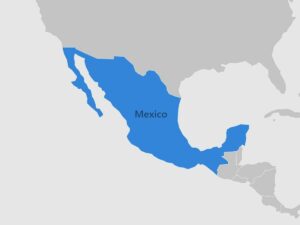
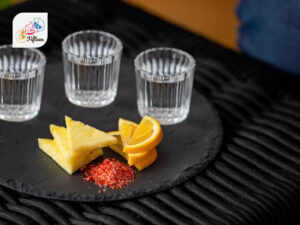
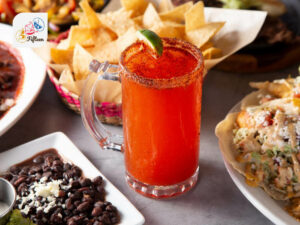
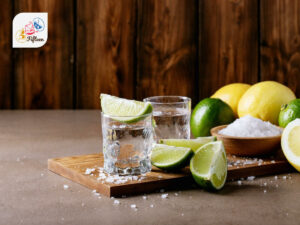
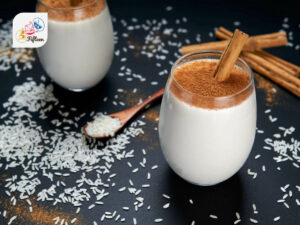
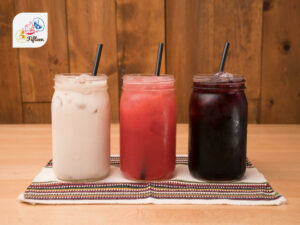
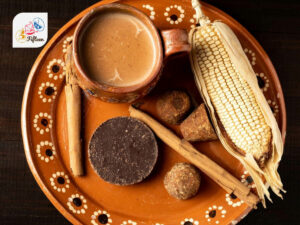
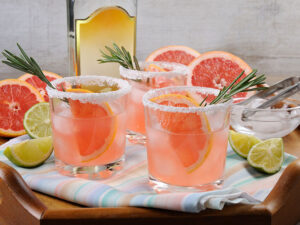
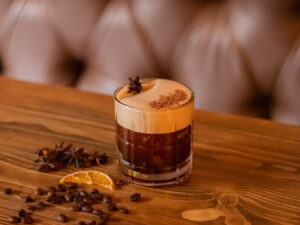
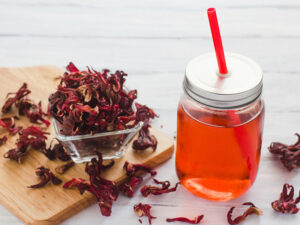
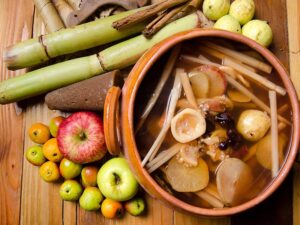
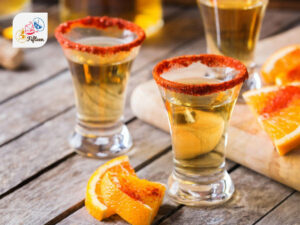

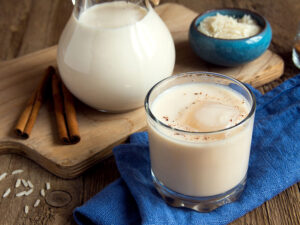
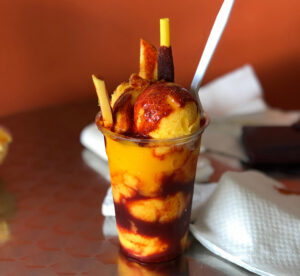
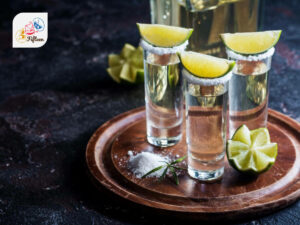
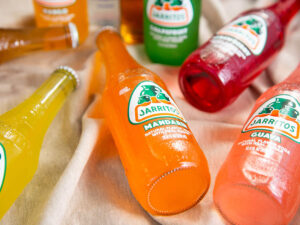
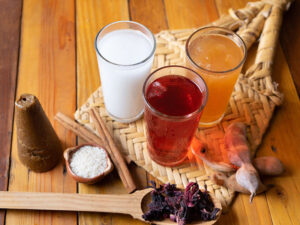
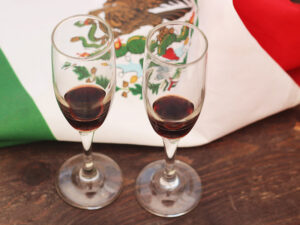
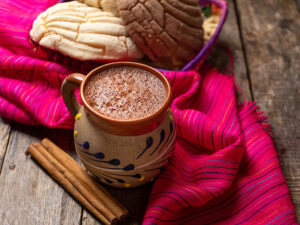
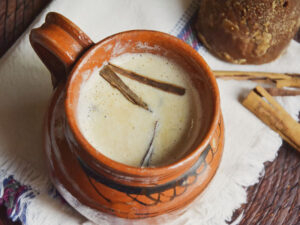
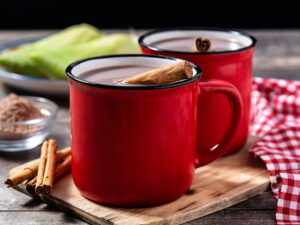
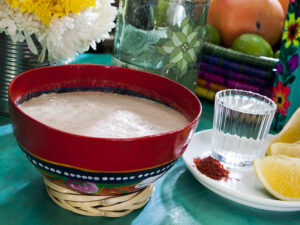
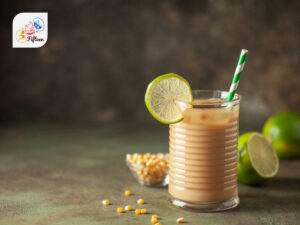
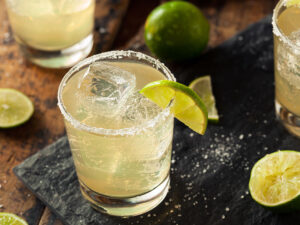
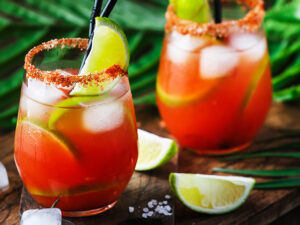
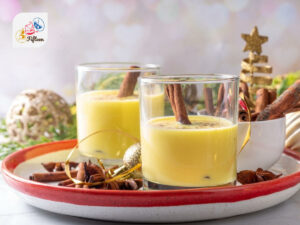
Jamie Scott
Editor in Chief, Senior Content Writer
Expertise
Home Cooking, Meal Planning, Recipe Development, Baking and Pastry, Food Editor, Cooking-video Maker, Western Food Evaluation Expert
Education
Le Cordon Bleu College of Culinary Arts
Local Community College, New York, NY
Jamie Scott is a skilled culinary expert and content creator specializing in Western cuisine. With over 15 years in the culinary field and formal training from Le Cordon Bleu, Paris, Jamie deeply understands how to blend nutrition with delicious flavors. His passion for cooking matches his commitment to making healthy eating accessible and enjoyable.
On Fifteen.net, Jamie brings a fresh perspective to classic dishes and beverages, offering readers insightful recipes, cooking tips, and a fresh view on meal planning that emphasizes taste, health, and simplicity.